Teach Like a Beaver
Voices from the Field 20 September 2022
By Adam Haigler
Don’t be surprised if your industriousness begets a reputation as a disruptor. Colleagues will undoubtedly catch wind of your efforts and likely be inquisitive, perhaps skeptical, and a few may just catch a spark of inspiration that ignites their own passions and network.
Adam Haigler
Co-Founder of Open Way Learning
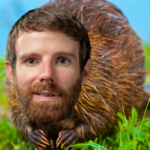
Adam “A Dam” Haigler
There are some species in an ecosystem that have an outsized impact on the health of their biological communities. Also known as keystone species, these organisms provide essential services for their fellow flora and fauna that allow them to thrive.
The beaver is chief among these species in many parts of North America, Europe, and Asia. Their dams completely restructure an ecosystem and play a crucial role in the health of hundreds of millions of acres of habitat, while also providing essential services that benefit humans like sustaining fisheries and increasing groundwater supplies. This habit of leaving their mark has earned them the moniker, “ecosystem engineer,” from wildlife biologists. However, they are as industrious as they are disruptive because they leave a noticeable impact wherever they go, which sometimes leads to the flooding of roads and other human infrastructure.
So, what might these ecosystem engineers have to teach educators looking to create “learner-centered ecosystems,” where countless learning opportunities are organically generated through strategic actions that result in unforeseen benefits across the board? How can we be industrious, intentional, and just maybe, beaverishly disruptive in our pedagogical pursuits? Perhaps my story could provide an image of possibility…
Defining Experiences of a Beaver Teacher
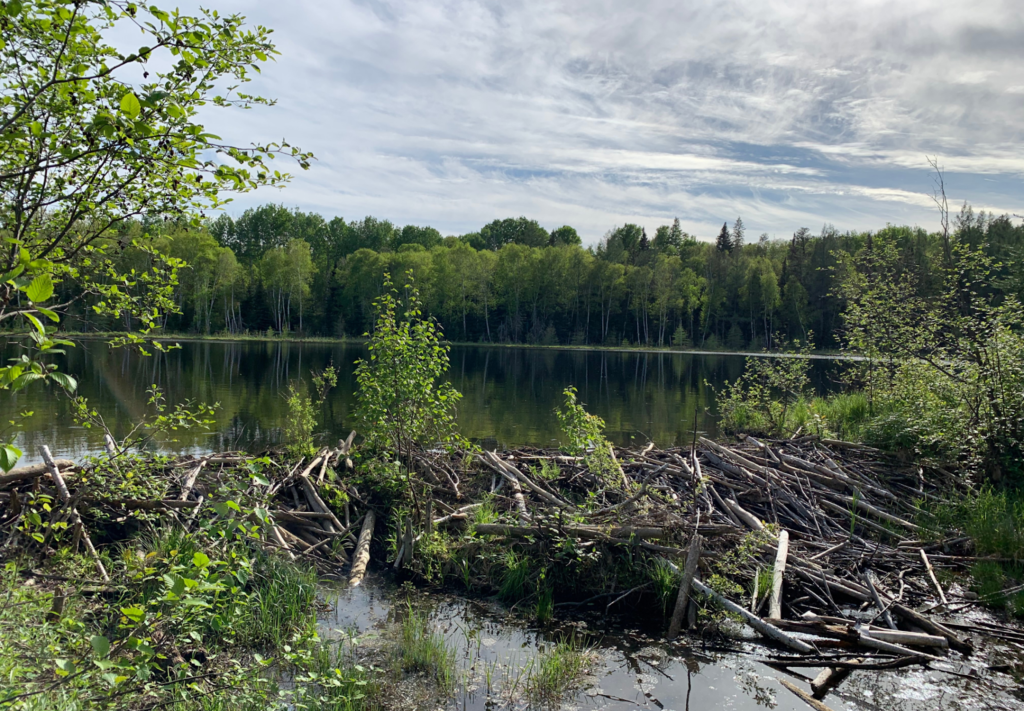
Beaver dams create ponds and wetlands, which provide habitat for countless organisms and naturally sustain fisheries and aquifers, similarly to how “Beaver Teachers” create an ecosystem of learning that continually intrigues and engages their students.
After a mostly underwhelming K-12 experience, one fateful day in my senior year of high school, a favorite teacher invited a recent graduate to speak to our class. The guest speaker regaled us with tales of service, challenge, and delight from his year spent in inner city Boston with City Year, an Americorps program he had chosen in lieu of his freshman year of college.
That day proved pivotal for my life’s path. It inspired two Gap Years that found me traveling widely and serving in a variety of roles including docent in Costa Rica, conservation worker in New Zealand, and outdoor educator in Texas. It also found me reconnecting with authentic learning through immersion, service, and the discovery of an insatiable curiosity about other cultures and biomes. I was amazed at how those years of pure experiential learning reignited the joy and wonder of learning that a conventional education experience had greatly diminished.
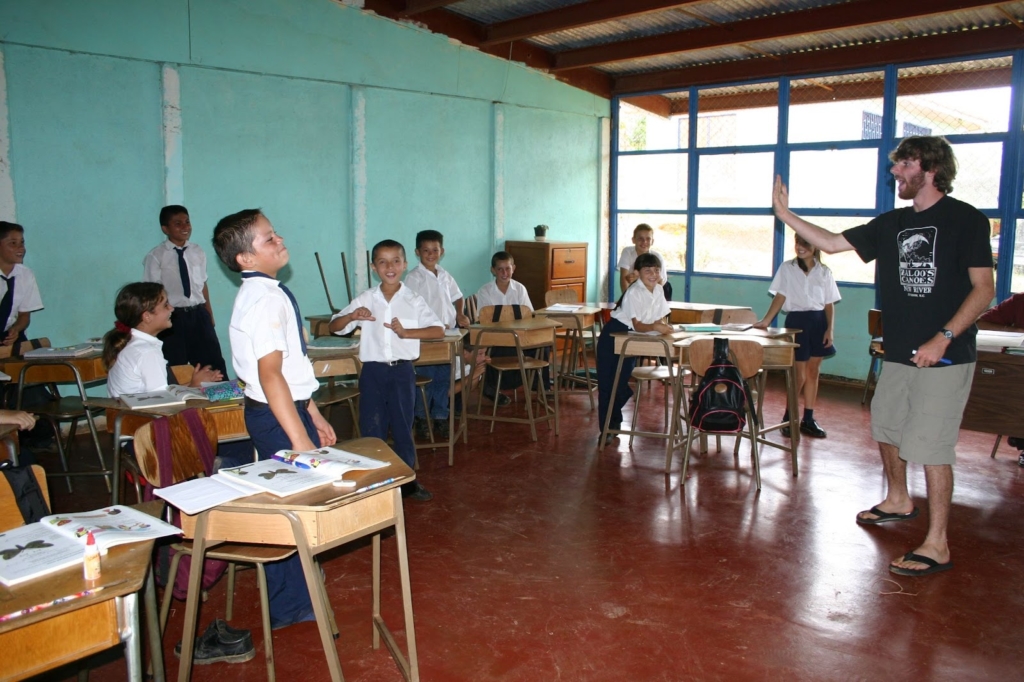
The author playing “Simon Says” with his class in Oratorio, Costa Rica in 2004.
Upon reflection, I recognize that the power of my own experiences didn’t arise from formal educators but from a diverse network of inspirational people and places that each taught me a lesson along the way. Essentially, I had stumbled into an ecosystem — a web of connections — that fed my curiosity and purpose.
Naturally, I was enthusiastic about creating these experiences for others and subsequently dedicated the rest of my professional career to learning how to be a better experiential educator. My work continually revolved around the question of, “How can I become a conduit of community learning for my students?”
In other words, how could I create environments that invited students into their own organic learning journeys — like a true Beaver Teacher?
Pioneering a Learning Ecosystem

Students worked with local experts to learn crafts, sustainable agriculture, and outdoor leadership at the Pioneer Project.
After working for several experiential education organizations, my wife and I endeavored to design a program from scratch that would leverage the talents and natural beauty of our area to create powerful experiences for Gap Year students from around the country. This resulted in the Pioneer Project, which enabled students to develop skills in traditional craft, sustainable agriculture, and outdoor leadership over an 8-10 week program. The project introduced students to local crafters who taught them skills, from soapmaking to blacksmithing, and was punctuated with 5-day outdoor adventures and frequent visits to local farms — all in the service of cultivating clarity of purpose, empowerment, and interdependence.
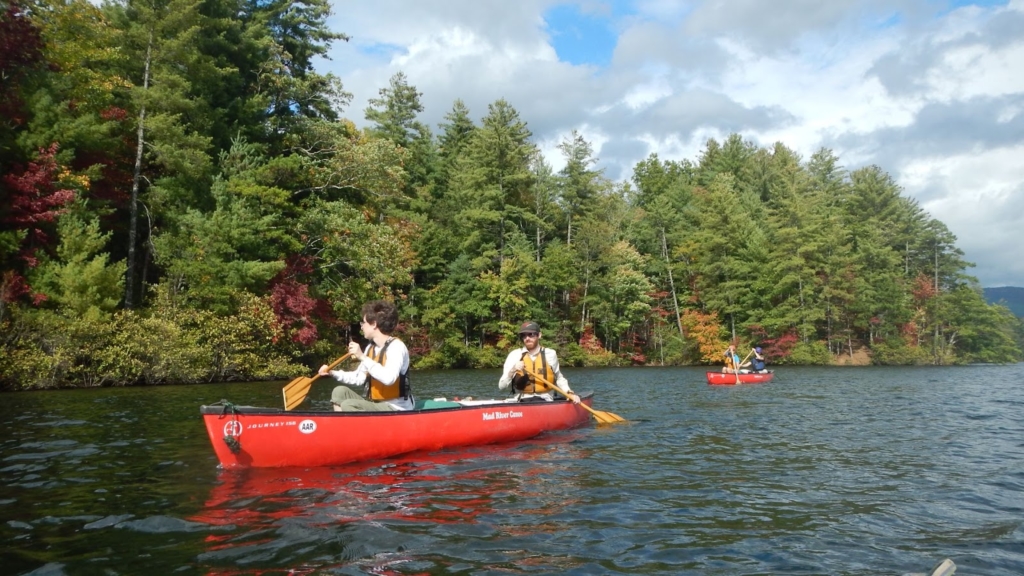
The author guiding a canoeing expedition on Lake Santeetlah in Robbinsville, NC.
Our intention was to allow students to interact with as many experts as possible in the community, rather than focusing solely on the skills we possessed as program providers. This enriched the experience immeasurably for students and us, as we collectively developed relationships with each other and our community-based mentors throughout a process that ultimately provided students with enduring passions, skills, and friendships.
A Dam Classroom
My meandering education path eventually led me to be a STEM teacher at a wall-to-wall Project Based Learning school in western North Carolina. By this point, I had seen the power of community-based learning and made it a key priority in my work there.
The school’s environment enabled our team to co-create unforgettable community-based projects with our students. One of the most notable for me was when the students worked with local lawyers and law enforcement professionals to do mock trials in the community’s historic courthouse. After students rested their cases, legal professionals would provide expert analysis to the audience, often remarking that the quality of the trials rivaled what they had seen in law school.
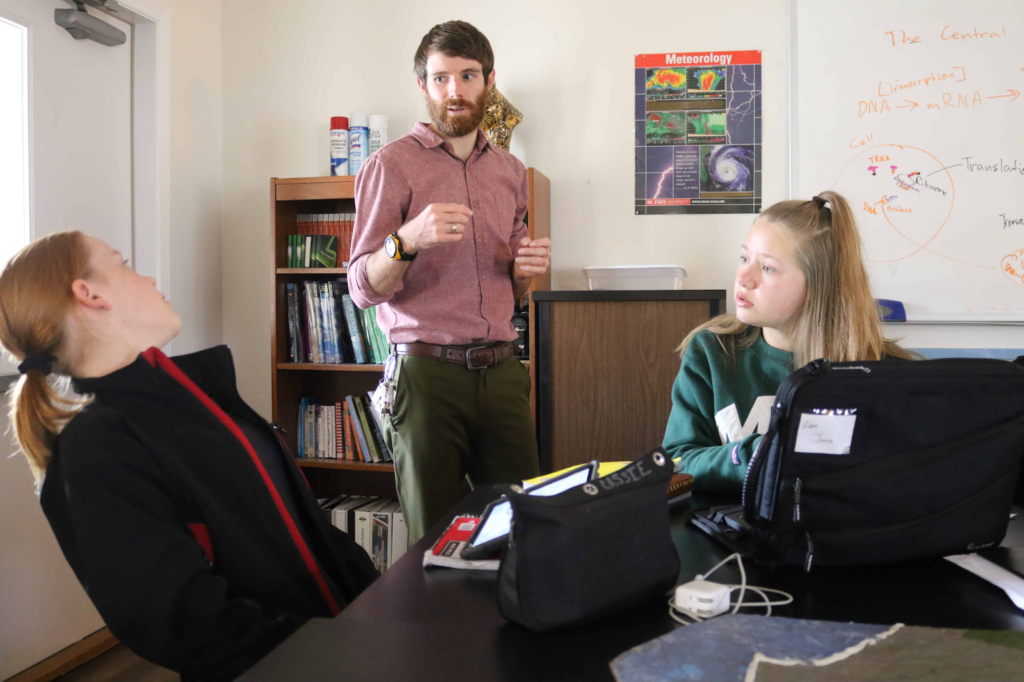
The author speaking with two students about their climate change court case in his role as a teacher at a PBL-focused school. (Photo: Liz Bell from EdNC)
Other projects found them collaborating with local engineers to build working race cars; interviewing local elders to learn craft, music, and ethnobotany for a living museum and e-book; and designing solutions for communities affected by natural disasters.
We used “Entry Events” — a mainstay of Project-Based Learning, where students get hooked into the project through an engaging experience — to introduce students to myriad local organizations and hubs of networks for a variety of topics. They would then nurture and leverage these relationships to deepen their understanding of the project focus and ultimately find ways to create lasting change in their communities or explore a potential passion, all while mastering academic material through the project lens.
It was as if we were planting the seeds of a learning ecosystem that we would systematically fertilize and water throughout the project timeline.
Releasing the Dam
These groundbreaking experiences inspired a colleague, Ben Owens, and me to write Open Up Education! How Open Way Learning Can Transform Schools, which distilled many of the principles from our school’s culture and sought to identify what ingredients led to the magic we had witnessed firsthand. Fittingly, this process led us to connect with an ecosystem of educators and innovators from around the world in a quest to establish universal truths about how to systematically create innovative school cultures through the use of an open source ethos.
Ben and I have since co-founded Open Way Learning (OWL), a non-profit that uses the design process to create and refine the local conditions that support a culture of learner-centered innovation — one that is then sustained and scaled through the collective wisdom of a network of educators who routinely interface with their communities in the pursuit of authentic learning. Our approach is unconventional, to say the least, but has resulted in various case studies for educators looking to engineer their own ecosystems.
One of our favorite illustrations of this process occurred in Old Saybrook, Connecticut, where we worked with the local school district to design experiential, community-based summer programs centered on student interests. Instead of planning five days of curriculum taught solely by us, we employed a co-designed approach by working with a coalition of teachers who each facilitated an activity that would get them and their students off campus, interacting with local artists, musicians, bakers, performers, and historians.
Throughout the week, the teachers inspired each other and designed their own summer courses, integrating lessons learned from peers with ideas and empathy-driven processes facilitated by us to feed their imaginations — all while leveraging their own community assets to deepen the experience. The results were rather astounding to everyone involved! So much so that when the school year began, the coalition of teachers championed the philosophy and pedagogy with their colleagues who scaled the practices across every school in the district.
One highlight of that initial summer experience that has sustained involved a teacher who took us and the workshop participants on a tour of the murals of New London, CT. The murals were the outcome of a local movement that had started decades ago and resulted in a multitude of murals around the historical city. Two art teachers heard about the tour and were inspired to see how they might make public art with their students.
When the school year began, they decided to follow the voices of a group of students who were English Language Learners and wanted to celebrate the diversity of their town through a massive mural across from the town’s main square. After navigating ample challenges along the way, they successfully hired an internationally renowned mural painter to oversee the project, then helped him paint a mural that is sure to inspire for decades to come. Now, people regularly gather around the mural to chat and connect, something that had never occurred previously in the unsightly parking lot the mural overlooks.
Reflecting on this accomplishment, art teacher Sara Menga remarked, “This type of authentic experience has deepened our connection with the families of our student artists. Without creating an experience where families would be welcome to engage in the learning, we may not have gained as much respect as we now have from our community.”

Painted by Rafael Blanco and inspired by Old Saybrook’s students, “A Piece Of Freedom” now adorns a wall adjacent to the town square.
Start Building
So, what can you do to start creating educational ecosystems and unforgettable community-based learning opportunities for students and teachers alike? Like a beaver meticulously building its dam in ways that will create the ideal ecological conditions for its survival, educators must be intentional and strategic in their approach, lest the dam burst unexpectedly and all their efforts become driftwood! Here are some things we’ve discovered along the way that might help in your engineering efforts:
1. “Culture Eats Strategy For Breakfast” –Peter Drucker
Recognize that school culture and collective teacher efficacy are essential to sustaining any new strategy. So, start by having conversations about everyone’s “why.” Yes, we mean everyone — especially students! Connecting with personal purpose, then triangulating a collective purpose will help fuel the fire of instructional practice.
Embrace the power of a living mission and vision and ensure that these conversations frequently occur and reinforce the student-centered, difference-making philosophy that underlies the pedagogy. During the process, remember to share images of possibility like those mentioned above to shift the paradigm of thinking in the group so that they can break new and innovative ground.
Once the group can agree on a set of guiding principles and values, as well as a living mission and vision, cultivate a collaborative culture through strategies such as regularly integrating co-teaching, instructional rounds, well-structured Professional Learning Communities, and Design Sprints using Human-Centered Design Thinking processes. Sustaining a thriving network of connections starts with practicing effective collaboration, so make sure your internal team is modeling these healthy practices for students and community members.
2. Community Asset Mapping
Identifying the community resources available to you and your school is something I cannot overemphasize. It is vitally important that you invest the time and energy to brainstorm the assets that can inspire all members of your learning community.
We often do this by creating a simple Google Sheet with columns for contact information and what skills or subjects each community contact relates to. Then, we invite everyone in the room to brainstorm as many contacts as they can think of who could become a resource for students’ passions. We also encourage teams to invite in voices to this process that have not traditionally been part of the conversation, so that as teachers and students are ideating meaningful projects, they have a readymade network of support they can rely on.
In fact, this list could help inspire interdisciplinary project ideas by illuminating the unique resources available in your own place.
3. High-Quality Project-Based Learning
The elements of HQPBL work seamlessly with Beaver Teaching, especially when grounded in empathy-centered design that starts with the cultural elements that enable it to thrive. These elements provide a vehicle for learner-centered instruction and provide a vehicle for instruction that naturally lends itself to connecting with the outside community.
But, HQPBL alone doesn’t necessitate this “educational ecosystem” approach, so the educators involved can make simple tweaks like:
- Strongly encouraging each student project team to have an outside mentor that is assisting with their project. (Make sure you scaffold communication strategies for students and manage expectations of outside mentors to best facilitate this process.)
- Bringing in local experts for routine collaboration, feedback sessions, and to serve as public audience members.
- Emphasizing difference-making and service learning in each project so students always see their content with context and become “solutioneers” for their communities. This approach is made even more powerful when students can use strategies such as Liberatory Design to recognize and address systems of oppression they see in their own communities.
4. Network Effects
Reframe the role of teachers and students so they see themselves as contributing members of a network of learners that always extends beyond the classroom. That way, when an educator, student, administrator, parent, or other stakeholder meets a new person or discovers a new place that has something interesting to offer, they have a natural inclination to connect this novel resource to the learning community.
In the community-facing HQPBL context, each new collective project focus will chart new territory, thus widening the network continuously in ways that enrich the learning experience exponentially.
Industrious and Disruptive
Hopefully, you have found that elements of my story are actually or could be a part of your own story. If so, take that spark of inspiration and become a hub of a network that will undoubtedly benefit all of the members of your learning community. You, like the noble beaver, will then become an “ecosystem engineer,” whose actions create endless opportunities for those around you, often in totally unexpected ways.
Don’t be surprised if your industriousness begets a reputation as a disruptor. Colleagues will undoubtedly catch wind of your efforts and likely be inquisitive, perhaps skeptical, and a few may just catch a spark of inspiration that ignites their own passions and network. In fact, if your efforts aren’t somewhat controversial, you may not have sufficiently disrupted the status quo…yet!
To connect with Adam to share how you teach like a beaver in your ecosystem, use #TeachLikeABeaver on Twitter and LinkedIn or contact Adam directly on LinkedIn.
New resources and news on The Big Idea!
×
We recently announced a new R&D acceleration initiative to connect and support local communities ready to bring public, equitable, learner-centered ecosystems to life.